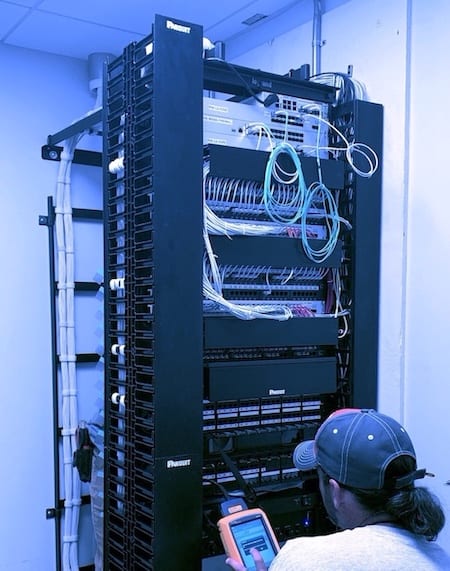

Who’s Minding the Store?
Such unknown variables can present headaches for Project Managers especially when they can’t be hands on to oversee all of the moving parts that go into a successful network installation project. Without eyes and ears on the ground regularly communicating the status of each phase of the project, PMPs and operations managers waste time on follow up and false assumptions. Has the equipment been received and been communicated to the installation team or is it back ordered or held up in customs? When will the ISP be on site? Is the fiber cabling and electrical work done? Is it done properly?
Not having total control over the project, means there are a number of checklist items that can go wrong before the actual rack and stack aspects of the network installation can even begin. Short of a reliable, fully vetted network install team on site, organizations risk missing project deadlines. In the retail industry, being behind in IT can jeopardize new store openings. And, for traditional offices, that means staff must continue to work from home, or make do without Wi-Fi or other crucial IT resources.
Have a Good Network Pinch Hitter
The good news is it’s never too late to call in another install team for cleanup projects after their predecessors fall short on some key points. The laundry list of items to improve on commonly relate to proper cabling, proper terminations, observing company wiring standards, ordering the proper equipment and, of course, installing it properly. Recently, our network engineers went on site in a pinch mid project and noticed the following no no’s:
- The rack was mounted 15 feet in the air. This is fine, but the cabling stubs were 5 or 6 feet away. So there was no support between the stubs and the rack. Typically, a rack shouldn’t be 5 or 6 feet away from the cabling without proper support.
- The technician originally hung Cat6 cables from the stubs, which were far away from the rack, with no support and would have been dangling without ladder racks in place. If the company didn’t have the occupancy permit yet for the space, this may have held up approval.
- The previous technician didn’t mount the swing plate on the rack so the equipment couldn’t be rack mounted. The swing plate provides another 5 inches of space and without the swing plate the equipment was too long and there wasn’t enough space to clear the rack.
- Wireless Access Points (WAPs) were in the wrong places, minimizing network access and performance in certain corners of the space.
Network Installation Best Practices
Ideally, a professional network services team should be able to handle everything from design to procurement to installation. This includes smart hands on site and keeping the PMP posted on each phase of the project. Best practices for a comprehensive network installation project include the following:
- Conduct a site survey and get an idea of space, electrical, cabling, etc. A reliable floor plan with measurements and construction materials is a reasonable alternative. With this data, the install team can create a Wi-Fi heat map. Wi-Fi RF heat maps provide a pre-build insight into the performance of the signal quality. This is extremely valuable to know when designing the wireless access point layout.
- Evaluate business objectives and perform capacity planning (determining bandwidth and wireless access point requirements, security and administrative controls).
- Broker ISP data circuits and coordinate installation.
- Procure network hardware routers, firewalls, switches, and Wireless Access Points.
- Track shipments of all physical assets (receiving and scheduling installation).
- Verify installation locations, connect equipment and peripherals, and test client access (remotely/on-site per specifications).
- Conduct a walk through with the client and/or email completed project photos.
Using this approach, hopefully, growing organizations will be able to identify a reliable local IT vendor to serve as their operational point of contact on site; one that will manage all of these points to ensure a smooth, proper, and timely network installation. Short of that, knowing what your options are when those plans go awry is the next best thing.
TechNoir Solutions offers network related services such as installation and ongoing support for firewalls, routers, Wireless Access Points, and switches; security, performance, and availability management including eliminating bottlenecks; maintenance and repair; consulting; hardware upgrades; and software installations, including operating systems, firewall systems. For more information contact us at info@TechNoirSolutions.com or at 312-761-9800 .







